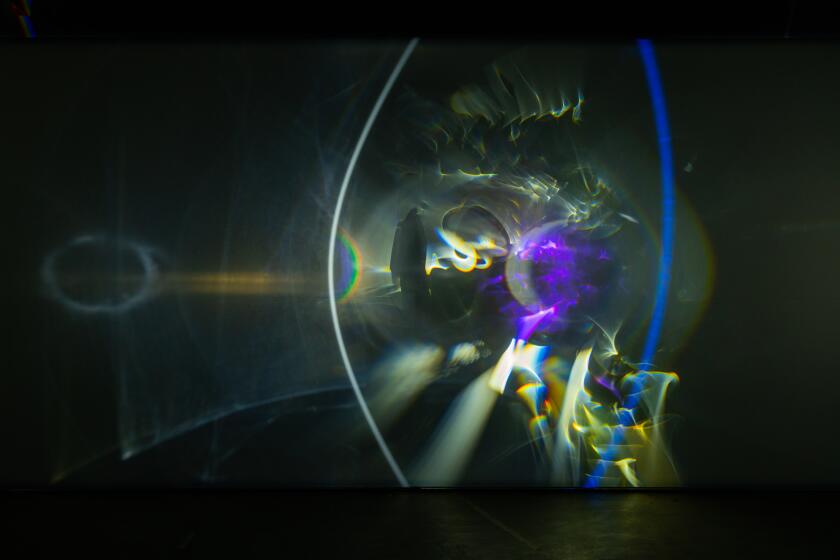Remembering photographer Pedro E. Guerrero
After The Times published its obituary of Pedro E. Guerrero, the photographer best known for documenting the architecture of Frank Lloyd Wright, I got in touch with Emily Bills, director of the Julius Shulman Institute at Woodbury University and co-curator of a retrospective of Guerrero’s work on view in the spring.
Bills said Guerrero should be remembered not only for working with artistic giants such as Wright and sculptors Alexander Calder and Louise Nevelson, but also for his ability to adapt his photography for his subjects.
At Taliesin West, Wright’s school in Arizona, “the harshness of the sun could have scared off other photographers or left them waiting for dawn or dusk to shoot the building,” Bills said. Guerrero took pictures at high noon, and that’s why images became documents of history -- photos of Taliesin fellows “hanging off the structure in a state of half dress as they complete their construction tasks. There is a severe angle to the shadows, the whole building seems to bake.”
Guerrero had to learn lighting all over when working with Nevelson, Bills said. “Much of her house was rendered in black on black, which erased any depth perception,” she said.
“I think he’ll also be remembered for his great sense of humor,” Bills said. “Guerrero spoke at the opening of our exhibition last April and had the entire audience roaring with laughter.” (The Julius Shulman’s Institute’s video interview with Guerrero can be seen on Vimeo.)
I asked Bills for her favorite memories from working on her Guerrero show. She had three, which I’ve passed along from her email:
1. “Guerrero is well-known for his work photographing Frank Lloyd Wright’s architecture, and we included many of these important images in the exhibition. My co-curator, Anthony Fontenot, and I were excited, however, to also introduce Guerrero’s audience to the array of midcentury architecture he photographed for many major publications, such as Home & Garden, Vogue and Harper’s Bazaar. His photographs of work by Marcel Breuer, Joseph Salerno and Edward Durell Stone are canonical contributions to the history of architectural photography and shaped the way we understand these buildings even today.
2. “The exhibition also highlighted Guerrero’s insightful portraits of some of the architects whose work he photographed. His portraits of Wright always show great reverence, he remained loyal to Wright his whole life.”
3. “Even at 94, Guerrero brought such life, energy and humor to his conversation with [critic and writer] Hunter Drohojowska-Philp at the exhibition opening. He commanded the audience with his stories about Mr. Wright and Alexander Calder, who was as warm and down-to-earth as Wright was formal and dramatic.”
We welcome story suggestions at home@latimes.com. For easy way to follow the L.A. scene, bookmark L.A. at Home and join us on Facebook, Twitter and Pinterest.
More to Read
The biggest entertainment stories
Get our big stories about Hollywood, film, television, music, arts, culture and more right in your inbox as soon as they publish.
You may occasionally receive promotional content from the Los Angeles Times.











